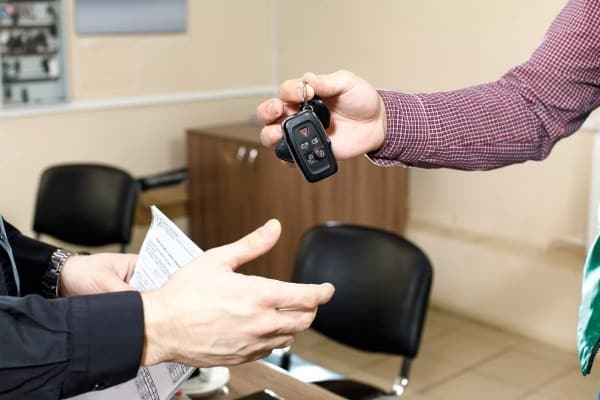If you are going to buy a second-hand vehicle, you should take into account a series of recommendations that the DGT advise in order to carry out the process avoiding problems.

Buying/selling a vehicle can be complicated. To make sure you carry out the transaction in the simplest and safest way possible, the DGT advise you to follow their guidelines.
The first point they makes is that after signing the purchase contract, you are obliged to make the change of ownership of the vehicle within a period of 30 days.
A vehicle in a situation temporarily deregistered, without local taxes up to date, or with pending fines cannot be transferred.
In the event of donation, inheritance or divorce, if you want to change the ownership of a vehicle but you are not going to buy it, but rather that it comes from a donation, inheritance or as a result of a divorce or separation, the steps you have to follow are slightly different.
When buying a second-hand vehicle:
Check the general condition of the vehicle
You can request a detailed report of the vehicle from the DGT, in which you will find information that may be interesting when buying a vehicle, both at the administrative or judicial level, such as data about the validity of the technical inspection (ITV), including the repairs and revisions that are carried out by the workshops attached to the digital maintenance or workshop book.
It is better to have the vehicle checked by a professional, but if this is not possible, you can check the most important points yourself:
Check its condition outside and in daylight: paint, bumps, signs of a previous serious accident.
Open the bonnet: check the oil and the timing belt.
Check that the tyres are the same as the ones that appear on the technical inspection card and that their tread is at least 1.6 mm deep.
Push the car sideways hard to check the damping.
Enter the car and check that the seat belts, seat adjustment and door locks are all working properly.
Insert the ignition key and press all the switches to check that they work correctly and that any warning lights illuminate.
Start the car: confirm that the pedals do not have too much play and press the brake pedal fully for 20 seconds: if it does not return to its initial position, the circuit is leaking. The wheels must respond to steering wheel turns with no slack.
Take a road test of the car. First, let the seller drive and try to detect possible sounds that may be a sign of failure. Then drive it and check that the car has no problems.
When in doubt, it’s best to ask the seller to let a mechanic verify that it’s in good condition before you sign for it.
Check the vehicle is transferable and free from charges
To make this task easier for you, we advise you to request a reduced report on the condition of the vehicle from the DGT. This free report offers information that allows you to confirm the correct identification of the vehicle, check if the vehicle is registered and information on whether there is any incident, load or impediment when driving that could affect the vehicle.
If in the reduced report you see that the vehicle had any incident, we advise you to request a detailed report or go to a traffic office before continuing with the purchase.
In the event that the vehicle is temporarily deregistered, before making the transfer, the owner of the vehicle (the seller) must register the vehicle.
Possible issues:
Circulation Tax of the previous year paid. A vehicle without local taxes up to date cannot be transferred.
Possible penalties imposed for paid vehicle violations. A vehicle with penalties cannot be transferred.
Free from any disposition limitation that was registered in the Movable Assets Registry, except with the express consent of the Finance Company or subrogation by the buyer.
Free of embargoes and seals. If the vehicle has an embargo or a seal, you must be informed of it and if you are satisfied with the situation, in order to make the purchase, you must sign a document indicating that you are aware of said situation.
Sign a sales contract
It is important that you sign a sales contract, the following information must appear as a minimum:
Buyer data: Name and surnames or business name and your DNI/NIE/CIF.
Seller data: Name and surnames or company name and your DNI/NIE/CIF.
Vehicle data: Make, model and registration plate.
Purchase price.
Date and time the contract is signed (the time is as important as the date).
Do not forget that the contract must be signed by both the buyer and the seller on each of the pages that make it up.
Pay or settle tax
You must justify the payment, exemption or non-subjection of the Property Transfer Tax (IPT), model 620 or model 621, as appropriate, in the autonomous community in which you have your fiscal domicile. In almost all the Autonomous Communities you can do it easily and electronically.
Apply for change of ownership with the DGT
Remember that you have a period of 30 days from the signing of the contract to transfer the vehicle.
This can be done online, via the virtual office on the DGT website, or face-to-face in one of their offices, for which you will need an appointment, and to be able to speak Spanish.
Remember to check the ITV validity
If the vehicle you just bought has an expired ITV, you will not be able to drive with it, so to carry out the corresponding inspection you must take it to the ITV station of your choice by mounting it on a tow truck or similar means authorised for its transport.





